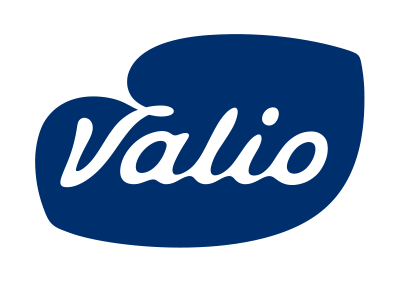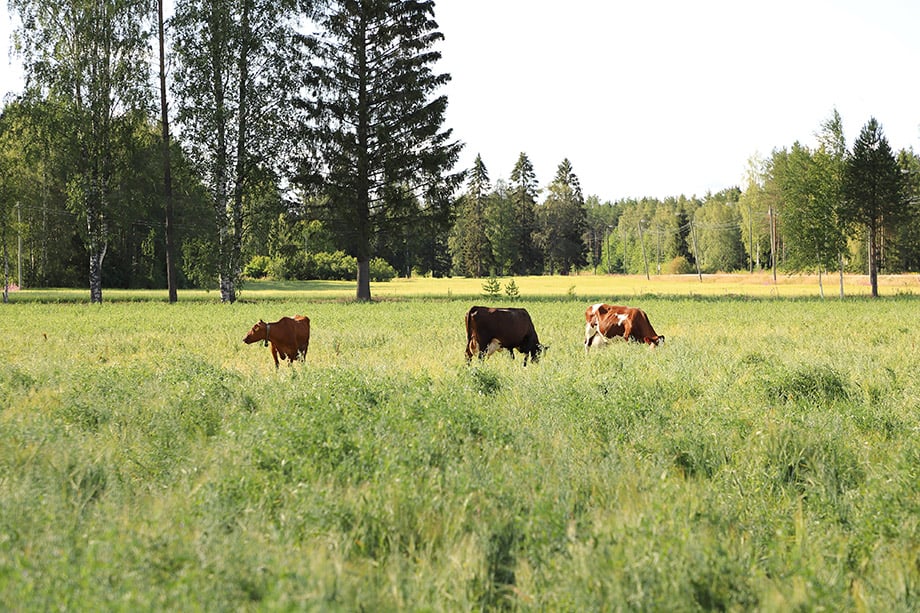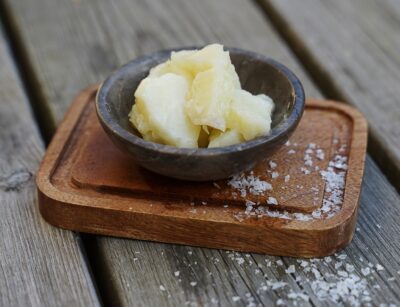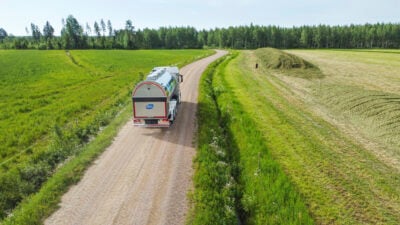Methane emissions in milk production fell in 1960–2020 by an overall 57 per cent, and by 35 per cent for each litre of milk. This reduction is achieved through improved production capacity, health and feeding for the animals, as well as reduced herd sizes. Milk production’s methane emissions in Finland account for 50 per cent of milk’s carbon footprint. Roughly 85–95 per cent of dairy’s carbon footprint is generated in primary production. It is still possible to further reduce the volume of methane.
In milk production, methane is generated in the cow’s rumen as it digests food, as well as when the farm processes and stores manure. Methane, like carbon dioxide, is a greenhouse gas, with a shorter life in the atmosphere, roughly ten years, but with an impact that is 28 times higher. In the atmosphere, methane dissolves into carbon dioxide in 10–12 years.
According to recent studies*, methane emissions from Finland’s milk production have fallen by 57 per cent in 60 years. In part, this reduction can be explained through smaller number of cows, as well as with improved production capability, care and higher-quality feeding.
“Compared to the 1960s, cows today can produce more milk with the same amount of feed. The volume of methane per kilo of feed has fallen, as the micro-synthesis in the cows’ rumens has improved, and the type of fermentation has changed. Total milk production volumes were at their peak in 1965, with 3,650 million kilos produced, which resulted in 110 million kilos of methane. In 2020, the numbers fell to 2,300 million kilos of milk and 48 million kilos of methane. Total methane production has therefore fallen by 57 per cent,” says the Natural Resources Institute’s Senior Advisor, Professor Pekka Huhtanen.
Methane produced by ruminants is circulating carbon
A cow burps roughly 450 grams of methane per day. Roughly 20 grams of methane is produced per kilo of milk, when the growth of a calf into an adult animal is considered. Unlike methane in fossil fuel production such as oil drilling or coal mining, methane in milk production is so-called circulating carbon, the formation of which begins with carbon dioxide that’s already in the atmosphere. The source of the gasses in fossil fuel production is the Earth’s crust, where it has been stored for millions of years.
“Grass plants bind atmospheric carbon dioxide, cows eat the grass, use it as energy and transform it into milk, releasing methane, which is transformed into carbon dioxide, back into the atmosphere. If the number of dairy cows does not change, the amount of methane in the atmosphere will find a balance, in which cows produce an amount of methane that will naturally dissolve and not create an additional warming effect. The methane currently in the atmosphere produced by Finnish dairy cattle is roughly half of what methane they did at their peak in the 1960s,” says Pekka Huhtanen.
Possible methane reduction of 30–40 per cent in next 15 years
Changes in feeding can reduce the creation of methane in a cow’s digestive system. For example, using plant oils and oats can result in a 5-10 per cent reduction.
“Feed additives such as the one containing 3-Nitrooxypropanol that has being piloted on Valio farms can reduce methane emissions by up to 25–30 per cent from current levels. In the long term, reductions can be achieved by enhancing feed use through animal breeding and by increasing a cow’s lifetime production. These actions would also reduce emissions other than methane and improve the production economy. Using manure as a material for biogas would reduce methane emissions by another five per cent,” says director Juha Nousiainen who is responsible for Valio’s climate program.
Ruminants help us produce high-quality food products on Nordic fields, which grow grass well but cannot always support a good, high-quality harvest of food plants for humans. Roughly half Finland’s fields are like this, and therefore grass-based food production also makes sense from a security of supply perspective.
“We must strive to reduce methane emissions from all sources,” says Juha Nousiainen.
Background information:
- Milk production’s share of Finland’s entire greenhouse gas load has remained at 3–4% for the entirety of the 2000s (Statistics Finland 2017).
- Methane emissions account for roughly half milk’s carbon footprint in Finland’s conditions, and the methane expelled by dairy cattle accounted for 2.5 per cent of Finland’s greenhouse gas emissions in 2020.
- This methane inventory was carried out by compiling cow and production numbers and cow weights from official statistics gathered in 1960–2020. The cow replacement rate was calculated based on herd size, and feed content was determined from feed usage data. Feed usage was determined from the produced milk volume and feeding norms. Methane production was determined based on feed content and usage with the Nordic Karoline dairy cow model. Future methane reduction scenarios were modelled with the Lypsikki® dairy farm model**.
*Methane production inventory between 1960-2020 in the Finnish Dairy sector and the future mitigation scenarios. Pekka Huhtanen, Aleksi Astaptsev & Juha Nousiainen.
** Huhtanen & Nousiainen 2012
Livestock Science 148 (2012) 146–158




